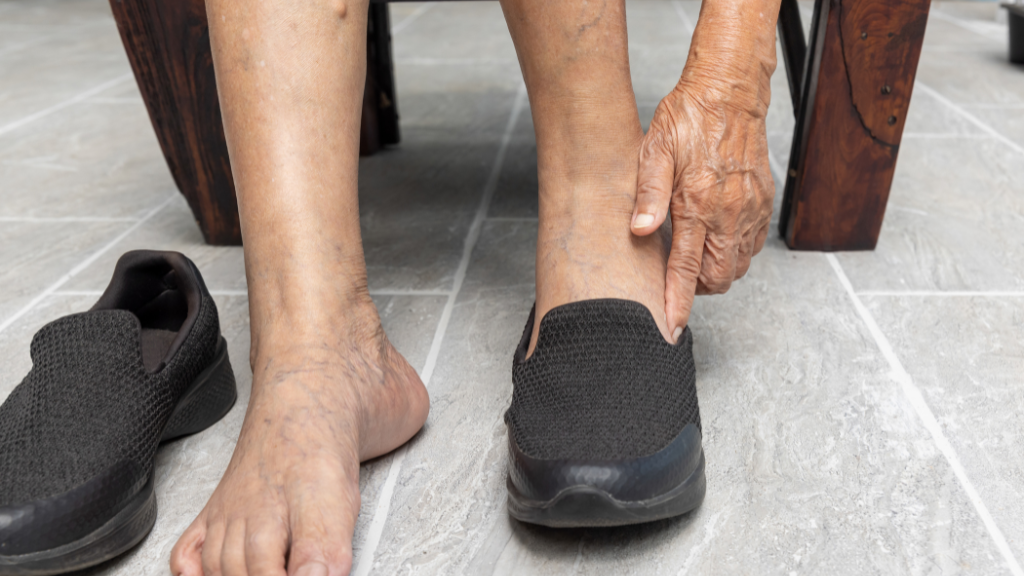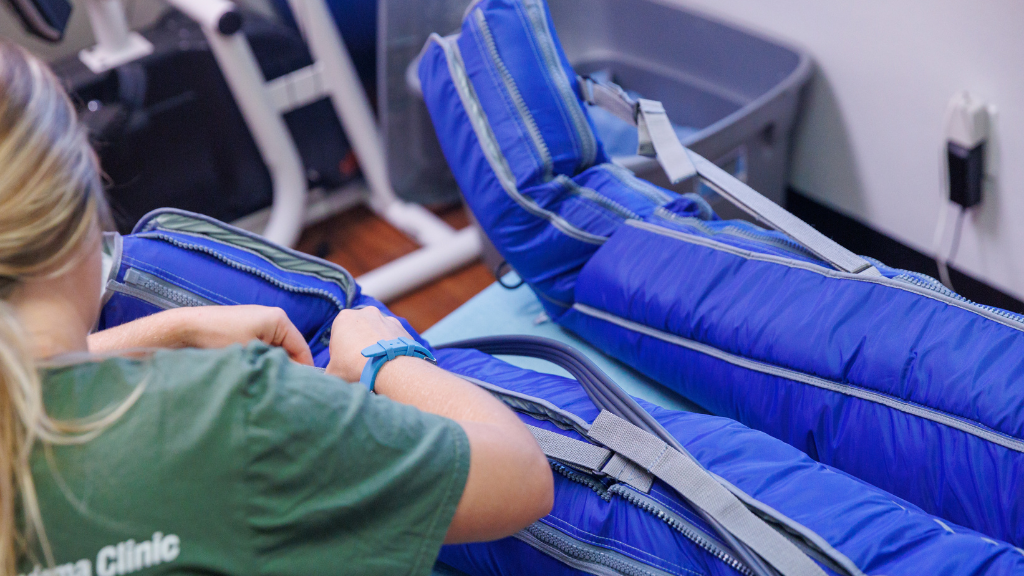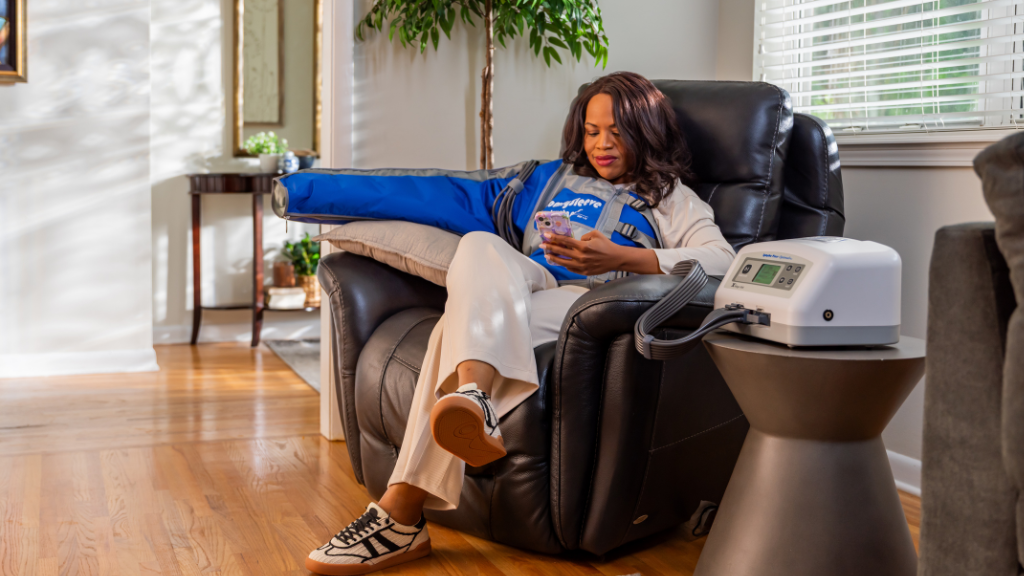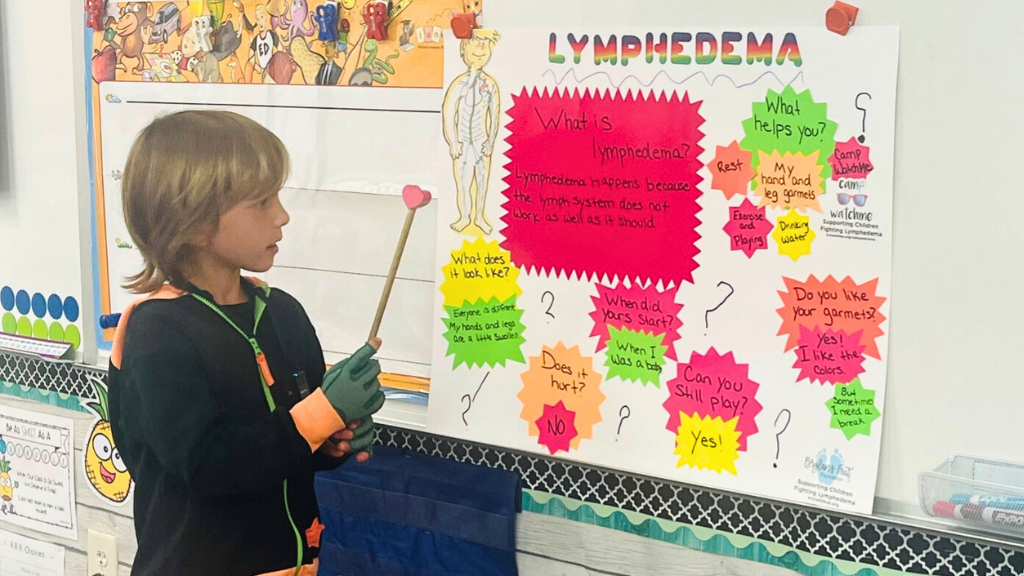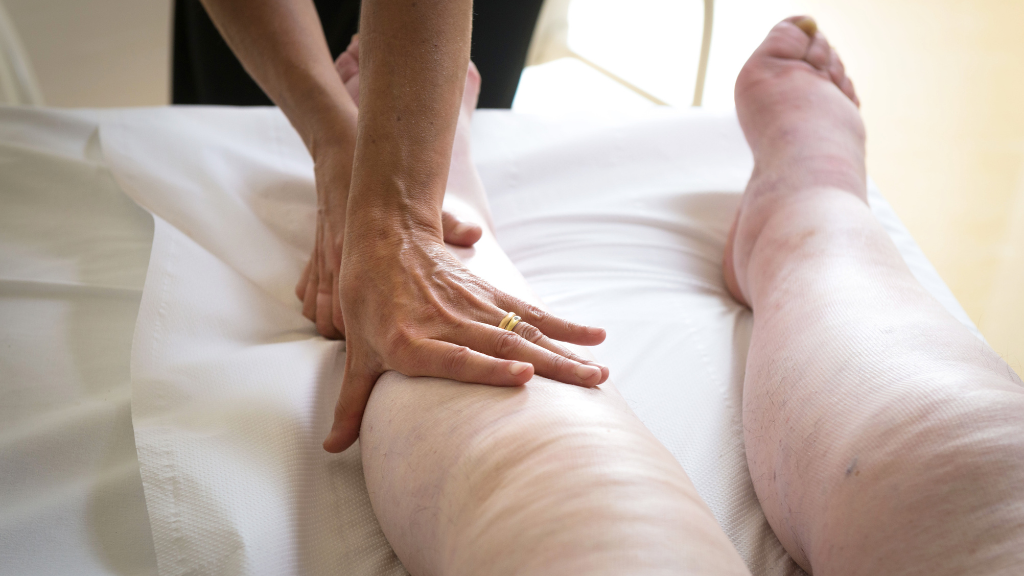This is a 5-minute read.
Experiencing lymphorrhea is often confusing and overwhelming. Lymphorrhea is a side effect of lymphedema in which lymph, under the skin, starts to leak out.
Imagine a pinhole leak in a gallon jug of milk. The first thing you may notice is a single drop of milk on the jug, so you wipe it off and look for proof of a leak—but everything looks fine. When you return the next morning and open the refrigerator door, you see there is a puddle of milk at the base of the jug.
Lymphorrhea can be much like this pinhole leak because lymph takes the path of least resistance, and a tiny opening in the skin can result in a continual escape of lymph. Much like the milk jug the following morning, over time the leak can increase, the pinhole can increase in size, and the fluid will accumulate, causing another issue.
This article will help you understand what it’s like to have lymphorrhea and who’s at the highest risk of experiencing it. We’ll look at its common symptoms as well as effective treatments for managing the condition.
What is Lymphorrhea?
Lymphorrhea is an abnormal lymph fluid flow that occurs when the pressure from swelling inside the tissue is too high for the skin to contain or there is an opening to the skin’s surface. A doctor may diagnose lymphorrhea after a patient reports an open wound or skin that has begun to leak.
The hallmark of lymphorrhea is the discharge of a light amber-colored fluid that flows, trickles, or beads up from the skin around an opening in the skin. This protein-rich fluid is known as lymph and isn’t usually present on the skin’s exterior.
Lymphorrhea is considered a potential complication of lymphedema. Both lymphorrhea and lymphedema are also potential complications of health circumstances such as receiving cancer treatment, venous insufficiency, or the result of inborn malformations of the lymphatic system.
Edema is also not the same as lymphorrhea, but they are sometimes interrelated. Edema is swelling that occurs when excess fluid is trapped in the body and can’t redisperse normally through the body’s fluid movement systems.
If you believe you may have edema, lymphedema, lymphorrhea, or any similar condition, see a doctor for a skin check and a proper diagnosis. Ample scientific research has shown that early diagnosis and treatment are the keys to successfully managing the long-term impacts of lymphatic disorders.
What are Lymphorrhea Symptoms?
The most common early symptoms of lymphorrhea are tightness and swelling of the skin. Seeping fluid is another common symptom, including the presence of tiny droplets of fluid beading up on the skin.
Other frequent lymphorrhea symptoms include a sensation of extremely cold or hot skin, wet skin that won’t dry, blisters, cracks/breaks in the skin, and deep pain within the skin. Some patients report feeling a sensation of tightness or dripping in the skin even if they can’t tell exactly where it’s located or why it’s occurring. Fever or shifts in body temperature can also be symptoms of lymphorrhea that may indicate a secondary infection.
Discuss these symptoms with a doctor. Left untreated, lymphorrhea can progress into an infection and become serious.
Who is Susceptible to Lymphorrhea?
Fluid accumulation in fresh wounds significantly raises the risk of lymphorrhea, so beware of any wound with excessive fluid buildup. Almost any trauma to the body, including surgery and skin treatments, brings the potential to raise the risk of lymphorrhea.
Anyone with primary or secondary lymphedema is at a higher risk of developing lymphorrhea. A family history of either lymphedema or lymphorrhea could be a contributing factor, so share your family and health history with your doctor to help them make the best diagnosis.
What Does it Feel Like to Have Lymphorrhea?
People with lymphorrhea may experience discomfort and embarrassment as they work to manage the symptoms of the condition. Many people with lymphorrhea first notice it because their shoes or socks seem to stay wet all the time, which is due to fluid slowly seeping from the feet or ankles.
It’s important to stay in tune with your body. Wound care is a constant concern for people with lymphorrhea. Wounds should be checked daily to determine their status and wound treatment should be applied as directed by a doctor.
People who have lymphedema may feel that they are on constant alert for seeping fluids and skin changes. Although this can be mentally and emotionally draining, vigilance is key to limiting the progression of lymphorrhea to a more severe stage. If redness, heat, or pain develop in the affected area, it’s important to seek medical attention as it could indicate a cellulitis infection.
How is Lymphorrhea Treated?
Skincare is a vital aspect of lymphorrhea treatment. Keeping the skin clean and moisturized to prevent cracks in the skin is a proactive approach that can help to prevent lymphorrhea from worsening.
Always consult with a doctor to determine appropriate use of wraps, bandages, or garments to help you manage your lymphorrhea. You may be prescribed special medication or topical treatments made specifically for your condition.
Certain compression pumps for lymphedema can be safely used in conjunction with lymphorrhea care. Numerous clinical studies and doctors’ recommendations support the benefits of Lympha Press pneumatic compression devices for a variety of conditions.
To learn more about your treatment options, discuss your lymphorrhea with your doctor or contact Lympha Press.
